8 - Interesting facts about Dakshina Kannada district nobody knows about
Dakshina Kannada is the district with the highest literacy rates in Karnataka, with Mangalore, the capital city as well, ranking 1 in the state. It is also the most religiously diverse district in the state. While Tulu is the most widely spoken language here, it has immense diversity with regard to the number of languages and their derived dialects. This is partly also because of the diverse ethnic groups residing in the location.
The majority of the people residing in Dakshina Kannada also called the Tulu Nadu, are the Tuluvas. This is followed by the Konkani people, Brahmins, Holeyas, Muslims, Mangalorean Catholics, and Arebhashe Gowdas. Each of these separate ethnic groups has its sub-sections with both the Tuluvas and the Brahmins having 6 sub-sections each.
Of this diverse group of people, during my all-India cycle tour, I got the opportunity to reside with one of the Brahmin families, called the Havyaka Brahmins. Living up to the bestowment of the district as the ‘cradle of Indian banking’, the host with whom I stayed, and so also his cousins, were into finance-related work.
In the 3 to 4 days of stay at a place called Kavu, which is a part of the Puttur Taluk, I got to learn immensely about the Dakshina Kannada district. Coming from Bangalore and passing over 5 other districts including the last district of Kodagu, arriving here I experienced a cultural shock. The heterogeneity of this place concerning people, cultures, traditions, practices, languages, food, and festivals, is just astonishing!
To learn about the Dakshina Kannada culture, one needs to stay here and work as an ethnologist for years to gain deeper insights. However, from my stay here for a couple of days, I could pick up the essence and superficial aspects of the culture around the place.
So, here are some of the interesting facts about the Dakshina Kannada district one will be pleasantly surprised to know about.
Table of Contents
Toggle1. Terrain and houses
A major part of Tulu Nadu has a ghat section and an evergreen or moist deciduous forest surrounding it. The remaining part of it is coastal. This means, the houses have to be built in valleys around the mountains. If one passes by the national highway road from Kushalnagar to Mangalore, one may come across very few houses on the roadside. This is because most are located on the interior where the lands are levelled over the valleys.
There will be a huge slope one has to climb. Sometimes, so much that, even a vehicle may not be able to accelerate over. Climbing these slopes, the houses could be located anywhere between 20 meters distance from the road to as much as 4 Km deep inside. The farthest house is usually in direct contact with the forest area.
Right now, the government has offered to lay down the concrete road for these localities up to 135 meters in. It may take years for some of these houses located deep in the interior to have proper roads laid down by the government.
Sometimes, rare animals and insects are visible on this road back to the house.
Since the weather at these places are hot and humid, unlike its closest districts such as Coorg and Chikkamangaluru, contrasting crops are grown and the houses as well, are constructed differently. Major crops are areca nut, coconut trees, pepper, rubber, and bananas. Since the farms are mostly attached to the forest, animals majorly wild boars, monkeys, and peacocks, make it hard for growing bananas or any other fruit-yielding crops.
Unlike the flat land districts I came across, most houses are farmhouses with farmland right beside them. Since many of these houses are independent and sparsely distributed, most houses have dogs trained to keep a watch and look after the place.
Images below show the dogs from two different houses.
Houses are traditionally built with an attic space designed for storing Areca nuts. Ceilings are made of tiles supported by wood planks that keep the house cool. Since the temperatures reach well above 40 degrees centigrade, the front of the houses has no traditional windows as they are unnecessary and obsolete.
Surprisingly there weren’t any mosquitoes in the night. Probably they find it hard to live in these harsh conditions. I got to have sound sleep, rid of these buzzing monsters for the very first time in the journey.
Practices of Firewood used to heat water and cook rice are still followed at these places.
2. What food do they consume to help them battle the heat?
The moment I entered my host’s house, I was offered jaggery and water. This came in as a new concept to me. I was told that the jaggery helps gain back energy from profuse sweating and heat, following which the water has to be drunk to keep ourselves cool.
Leaving that apart, a variety of food is consumed which is different from districts just 50 Km away, such as the Kodagu district. Kashaya which is a traditional drink with coriander leaves, dried cumin seeds, and other herbals added also helps one stay cool. Buttermilk is served everywhere one goes. Watermelons are another recipe for heat. Most of all, people here eat boiled rice which is larger sized compared to the traditional steamed rice. This is again believed to keep the system cool.
For the Havyaka Brahmins, most of their food is bland and tasty at the same time and considered Satwik aahara, something which is good for health. Onions and garlic are mostly omitted from the food prepared.
Many here resort to local herbal treatments for many common diseases such as cold, headache, stomach ache, and cough. Since the deciduous and evergreen forests here offer a wide range of herbs, ayurveda seems dominant in these locations. Many concoctions including the stalk of pumpkin scraped in buttermilk, or samrani leaves (Coleus amboinicus) mixed with honey, are used for a variety of treatments, suggesting the traditional knowledge of this place.
3. People are lean and fit
One thing I observed commonly with every person I came across in the 4 days of my stay here was that everyone was lean and fit. I couldn’t ascribe a reason for it. It could be because of one of the following three reasons:
Food:
Considering how nutritious the food is here and all the herbal ingredients they use, it could be a major contributing factor to their better health. But somehow surprisingly, I also observed that jaggery and other sweets are consumed frequently, which works counter-intuitively if the food had to be the source of their fitness.
Weather:
The weather could influence the people in these localities to lose a lot more energy in their daily work routines. The locality and weather could influence their morphology. A lesser surface area for sweat evaporation?
Work indulged in:
From the time I came to my host, Sandesh’s house, I consistently saw his mother Sri Devi, and aunt Vidhya perpetually glued to work. His father and uncle were up to the same business as well. Nobody sat in one place for a minute. It seemed like people there are extremely hard-working. On asking aunty if they felt tired doing such amounts of work, they didn’t seem to complain! They said things are getting easier by the day and the generation before them worked much harder.
4. Everyone is educated
Over the 4 days of my stay, I couldn’t come across one uneducated individual. Everyone seemed to have completed their degrees. On asking people around, I heard that even the girls there put in efforts to get educated before marriage. On inquiring, I figured that some of them have studied at local schools close by. Even if the school is labelled English medium, teaching is done in the local language of Kannada. This did not explain one bit how the kids derived such good education!
Probably it is more cultural, as parents insist kids work hard just as themselves.
On asking one of the degree graduates this question, he replied saying that the kids here definitely are smart but mostly as bookish type, and not really ‘street smart’. One thing I realized for sure speaking with many of these people was that each of them is well-mannered and confident in their attire.
Every single kid is enrolled in one or the other cultural activities. They are educated even in Vedas early on in their schooling. Some enrol in Yakshagana practice, while some in Bharatanatyam. The culture is itself such that the kids lack any sort of stage fear.
5. There are a wide variety of community settlements and languages
Of all the districts in Karnataka, Dakshina Kannada has to be the district with the highest heterogeneity when it comes to both people and culture. I have attempted asking people about the ethnicity of these different groups and what these communities were traditionally known for. Apparently, all the settlements share a long and rich history.
Tuluvas (Major sects)
- Billavas: toddy-tapping people. A subcaste of Billavas is known as Poojary (priest) who are involved in carrying out prayers (Pooja) during Buta kola events (Worshipping the Buta/demon).
- Mogaveera: primarily known for their fishing activities.
- Bunt: originally a warrior class community, today they are the major land-owning farming community in Tulu Nadu. The Haleri king of Kodagu district invited these people to settle at Kodagu as they were of warrior clan (Read this article on Kodagu warrior clan)
- Kulala: pottery makers.
- Tulu Gowda: belong to the Vokkaliga community but are linguistically different from that of the other districts. Their caste system division is, however, elaborate.
- Devadiga: musicians and temple servants. Traditionally they are the Vaishnava clan of people.
Other minority sects
- Konkani people: belong to the Indo-Aryan ethnolinguistic group native to Kokan or the coastal belt of the Indian subcontinent. They are present all across the coastal belt of the subcontinent.
- Holeyas: these are the scheduled caste people of the subcontinent, present there ever since medieval times. These people are mainly agricultural labourers.
- Koragas: the hill tribals. Traditionally basket makers. They are localized in and around the Kasargod district of Kerela, Dakshina and Uttara Kannada districts. Considered to be extremely low in population, are classified as scheduled tribals by the government.
- Mangalorean Catholics: descendants of Portuguese Goa in the 15th century.
- Muslims: descendants of the Arab Muslim traders. Roughly present in the region from around the 6th century.
Brahmins
- Shivalli: Temple priest and tantrics.
- Saraswat: Business and merchants class people.
- Havyaka: indulge in Yagna and homa.
- Chitpavan: Maratha Brahmins.
- Daivadnyas: Gold Smiths.
- Kota: experts at cooking.
Languages
Because of the presence of these heterogenous communities, there are a wide variety of languages that people in this region speak. Kannada (with a different dialect from other districts) along with Tulu are unanimously spoken by all locals in the district. That aside, the Bunts particularly speak Kindagannada (a subsect of the Kannada language), Tulu Gowdas speak Arebhashe, Havyaka Brahmins speak the Havyaka language, Konkani people speak Konkani, and the shivalli Brahmins speak Shivalli Tulu. Koraga is an indigenous local tribal language and Beary is the language spoken by many Muslims in the region. This apart, there are different dialects of each of the above languages present in the very district and the adjacent ones.
6. Indigenous local traditions
Yakshagana and Butakola are the indigenous traditions that are mostly endemic to the Dakshina and Uttara Kannada regions of the state.
Yakshagana
Yakshagana is a popular folk art of the district. Artists demonstrate a story in the form of dance and music in a night-long event. On my trip around the district, I luckily got to witness the Yakshagana event organized by Kateelu Durga parameshwari yakshagana mandali, the pioneers of Yakshagana events in the district. 6 groups of artists go around performing almost every day during the Patthanaje season (November to May).
The event is so famous here that it is thought in schools named Keshava Krupa and also during summer holidays for kids at houses called shibira.
Apparently, the Kateelu Durga parameshwari yakshagana mandali is so famous that they are booked out for the next 25 years!
Butakola
People in this place believe that the world is made up of land, forest, and the spirits. The spirits protect the land and the forest and thus maintain harmony between the both. The spirits could be in the form of ancestors, animals, or legendary heroes who attained divinity. The Buta sthana is the location close to the temple where the Buta resides and protects the community. This is one of the most basic ways of worshipping nature and ancestors.
A practice called Buta aradhane (also called daiva aradhane) is carried out where the spirits are worshipped for the sake of good physical and psychological health, overcoming family disputes, making critical judgements, and even attaining divination. This is carried out once a year during a festival in the village called the ooru jatre.
Tuluvas from the early ages were not into Vedic rituals and shastras but were practitioners of yagnas, shlokas, and homas (fire sacrifices). This makes both mantra and tantra style of Pooja (prayers) to God very common in this place. While Devaru aradhane (Pooja to God) involves Matra, tantra, and Pooja, Buta aradhane is carried out differently.
For the daiva aradhane or buta aradhane, communities such as Pambada, Parawa, Nalike, or Moogerlu, are capable of invoking spirits during the Butakola. During the event, an astra (fighting tool) is handed to the person who has a vesha on (dressed as a buta) to invoke the spirits into him/her. The event is usually carried out by 5 to 10 families as each family has their own Buta that they pray to, amongst the 1000+ daivas that exist.
Since each Buta has a story of its own, during the event, paddanas which are songs to illustrate the story of the Buta is sung as a part of the ritual. In the event, the Buta offers justice to family members and villagers and speaks about ethical ways of living to the families/villagers who invoke the Buta for the aradhane.
The event is divided into sura and Asura kriya, where there is either the sacrifice of an animal or not. Each event has its own unique rituals, with each of them having the Buta share a message with the villagers/families carrying out the event. Similar to yakshagana, this event as well takes place in the Pattanaje season from December to May each year.
Interestingly, for the Buta aradhane, 16 communities come together to carry out the event, with each of them having a specific role. Even Muslims are included in the event, with the role of bursting firecrackers.
During my visit to the Dakshina Kannada district, I had the privilege of witnessing two Buta Aradhane events. One of Panjurli is an animal spirit (wild boar), and the ancestral spirit of a king by the name Ullakulu.
7. Communal tensions
Since Dakshina Kannada district is a place filled with a wide range of people from different communities, one can expect the place to have communal issues.
In my travel across this place, I got to see and hear a range of mixed opinions about the tensions between communities. From what I witnessed, I saw that the Muslims and Hindus live in a peaceful neighborhood. On multiple occasions, I saw the Muslims being supportive of the event (ooru jatre) that was taking place on the national highway route to Mangalore.
I was even told that Muslims have been a part of the Paddanas during Buta Aradhane since long ago.
Unfortunately, however, political extremists could be contributing strongly to the uplift of communal tensions in certain regions of the district. I was told that Kaldka and Ullala are a few places in the district where the tensions are high.
On my way to Kavu, I stopped by a bus stand to tackle the hot sun. During this time, I got to see a scrap dealer come by and collect scraps from houses close by. Sensing the opportunity to speak with a scrap dealer, I made friends with Nizamuddin who was going from house to house to collect the scraps.
To my surprise, Nizamuddin could speak fluent English and mentioned to me that the only reason he was collecting and selling scraps was that he finds it hard to cheat and lie to people. Although he could easily find a much better job, he denied taking one as any other job he chooses, he would be forced to do something wrong. From where I come from, I hadn’t seen such friendliness on the first meeting with a Muslim stranger. It felt nice that such thoughts don’t exist in the minds of people there.
8. A possible reason for a mixed culture in Dakshina Kannada
When the Srilanka civil war started in 1983, quite a bit of immigrants started coming over to India and settling down in regions of the Dakshina Kannada district. With them, they brought the culture of rubber plantations, which still make up a large share of plantations in the locality to date.
These people are called Silones and speak Tamil amongst the many languages spoken in the area.
From my previous experience of listening to locals complain about Assamese settlements in the Kodagu district (Read this article), I wanted to know if the locals had similar complaints here.
From speaking with many people, I got to hear mostly the same opinion. That there weren’t many issues with them coming over. When I explained to some locals that the adjacent district complain about Assamese settlements, they said that change is a part of the game. A huge number of Malayalis have gone and settled in Dubai. Does that mean, the culture in Dubai is drastically changing and so all the Malayalis have to be sent back home, asked a local.
The locals seemed to have accepted the fact that there is a mixed culture and that is the way it is going to be.
Acceptance of this fact h what has most possibly led to a large number of people coming over from various regions of the country and settling down in the Dakshina Kannada district.
I am a 31 year young PhD graduate who has decided to travel the length and breadth of India on my cycle, to document the journey of meeting a vast array of people. In my journey, I intend to understand the characteristic features of the people of this nation and categorize them based on their demographics, age, profession, gender, traditions, and cultural differences.
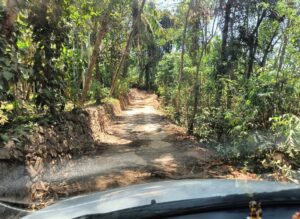

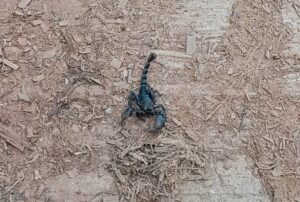
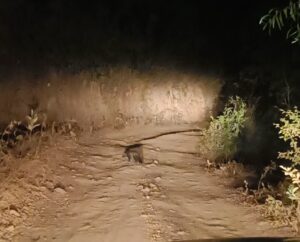
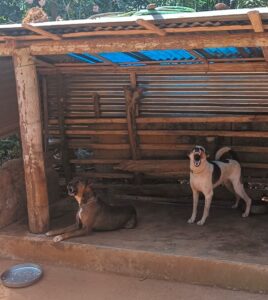
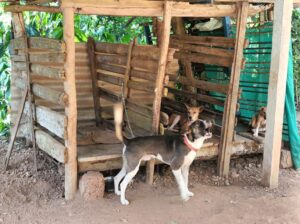
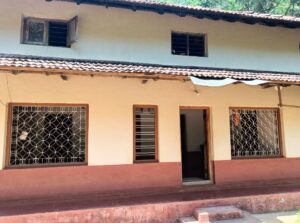
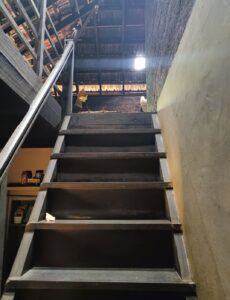
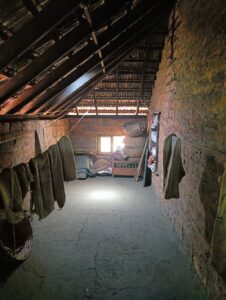
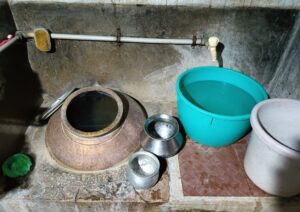
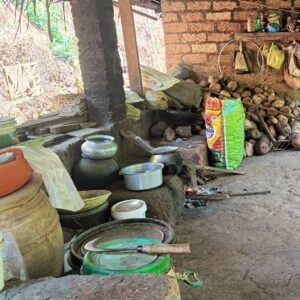
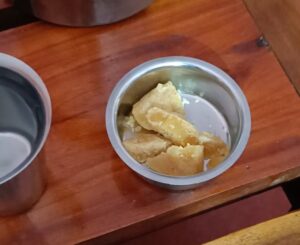
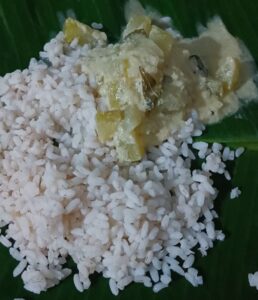
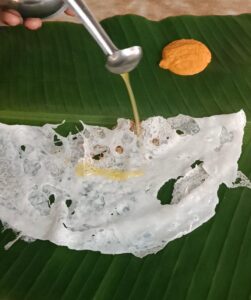
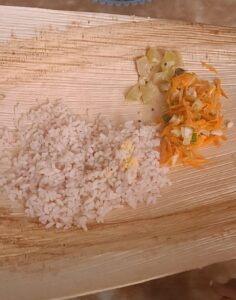
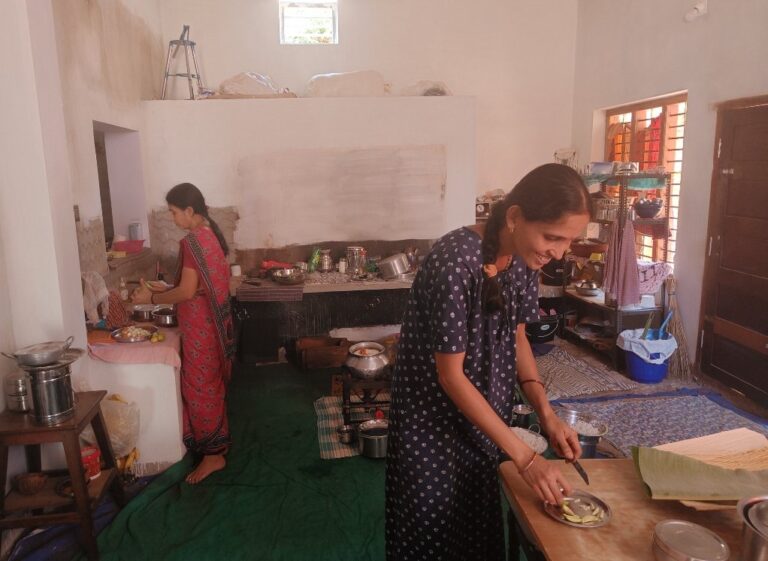
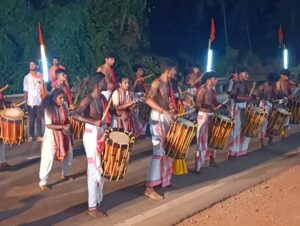
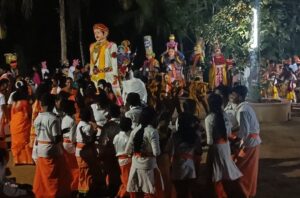
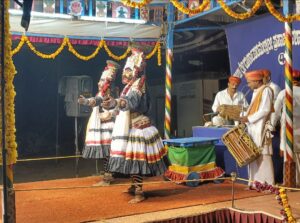
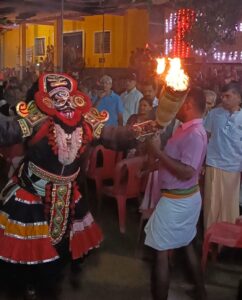
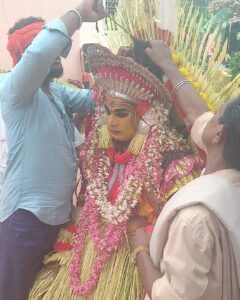

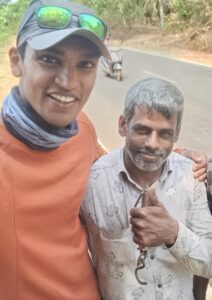
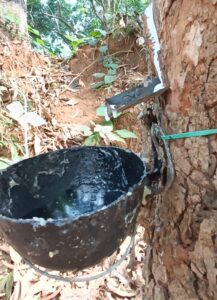
Very informative post. Have to read couple of times as it covers so many different topics. Great job that you manage to ride and meet people and remember and then write this. Amazing